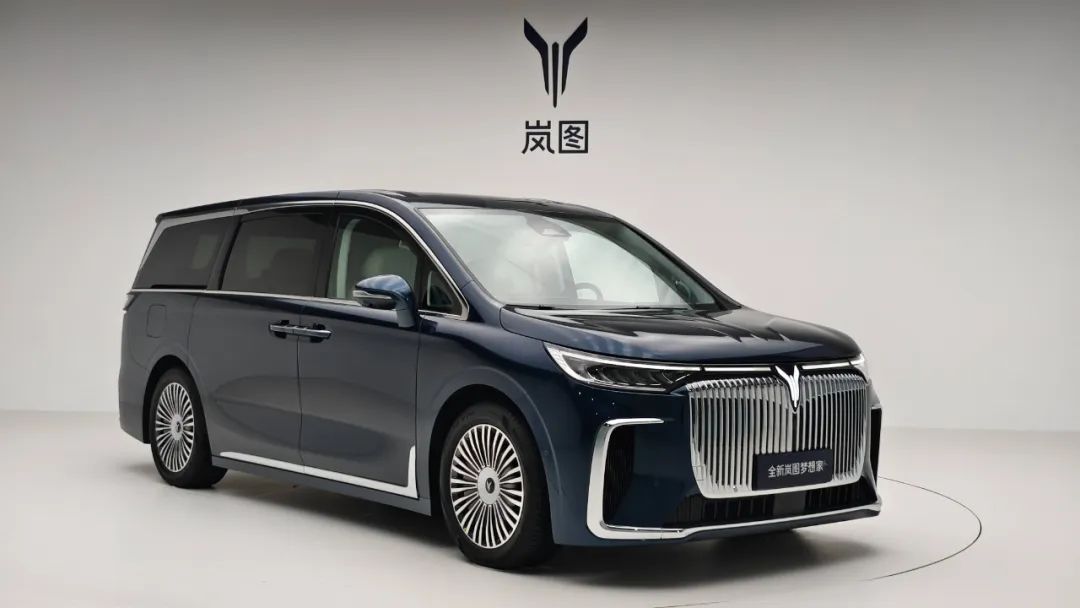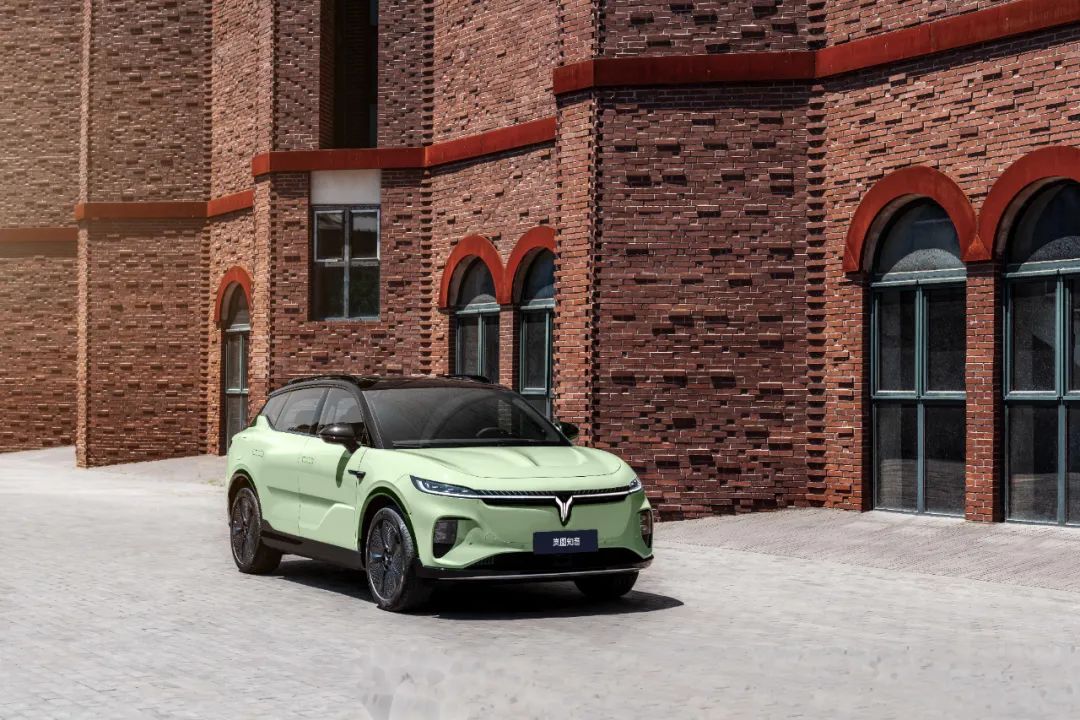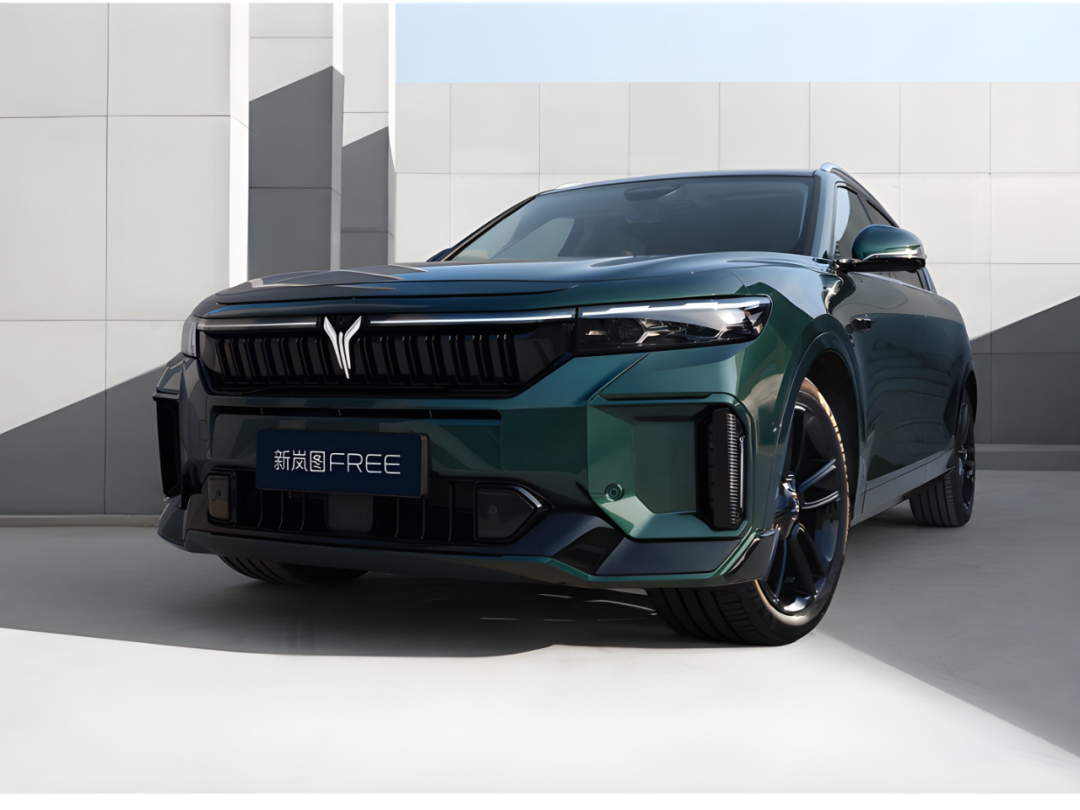Several new vehicles from Voyah will adopt Huawei's solutions, and the product development process will draw on the practices of Huawei and Li Auto
![]() 11/26 2024
11/26 2024
![]() 442
442

The new MPV Dreamer, launched in September, became the first "hit" product since Voyah was founded. Building on this success, Voyah began to address its many shortcomings, including product definition capabilities and intelligent technology.
AutoPix (ID: autopix) exclusively learned that Voyah will not have any all-new models next year, the first time in nearly four years. The focus will be on the SUV product line, equipped with Huawei solutions, marking a key change for Voyah next year.
Voyah plans to launch a new version of the Voyah FREE, which will be equipped with Huawei's intelligent solutions, including HarmonyOS cabin and Kunlun Intelligent Driving. As the first product under the Voyah brand, the switch to Huawei solutions is quite symbolic.
In addition to the Voyah FREE, another product, Zhiyin, will also adopt Huawei solutions for future models. Furthermore, Voyah is developing a new flagship vehicle, the H77, a large new energy SUV planned for mass production (SOP) by the end of 2025. This model will come equipped with Huawei solutions upon launch.
In the past, Voyah focused on the chassis and body, emphasizing an executive feel. The success of the Dreamer has prompted Voyah to reassess the competitiveness brought by intelligence.
Voyah will adopt more intelligent solutions provided by suppliers, allocating more resources to product definition to improve the "hit rate" of new vehicles.
We learned that Voyah hopes to improve its product development process and is learning from Huawei and Li Auto's processes. Marketing and R&D will be "integrated" at several key points, empowering product managers with greater authority while allowing the marketing side to engage closer with users.
Written by: Xing Ruifang
Edited by: Mao Shiyang
Original by AutoPix (ID: autopix)
01.
The Only Hit
Voyah has finally had a hit product.
In October this year, the monthly sales of the Dreamer exceeded 7,800 units, 470 more than that of the Tang EV. The Dreamer has become the new sales champion in the new energy MPV category, followed by the Tang EV, the Zeekr 009, the Buick GL8 PHEV, and the Xpeng X9. By the fifth place, sales were less than one-fifth of those of the Dreamer, allowing Voyah to pull ahead of stronger competitor brands.
Voyah's main factory is located at Huangjinkou, Hanyang District, Wuhan City. Since September this year, it has operated double shifts around the clock, producing about 450 new vehicles per day and maintaining high capacity utilization.
AutoPix (ID: autopix) learned that recently, the Dreamer has been rolling off the line at a rate of about 350 units per day, contributing to nearly 80% of Huangjinkou factory's production, with the remaining two models sharing the rest.

▍Voyah Dreamer
In October this year, the monthly sales of both the Voyah FREE and the Chase Light were less than 1,000 units, at 920 and 340 units, respectively. A person close to the Huangjinkou factory told us that co-line production of the three models is challenging because the Voyah FREE and Chase Light are not selling well. Sometimes, these two models are produced alternately, each Stop production for a period to fully allocate capacity to the Dreamer.
The Dreamer is the only Voyah vehicle that has achieved the championship in its market segment. A person close to Voyah's R&D system told us that the Dreamer's product capabilities fully benchmark the Tang EV, aiming to surpass competitors in every core function and configuration during development.
The Tang EV was the first vehicle to tap into the home use demand for new energy MPVs, capturing much of the seven-seat SUV market. The D9 was first launched in August 2022 and has been on the market for over two years, with monthly sales exceeding 10,000 units for 14 months.
Many MPVs claim to be "suitable for both business and home use" but are actually more geared towards commercial use. Initially, the Dreamer was also positioned this way.
The Dreamer was launched earlier than the Tang EV, first introduced in May 2022. In the first year after its launch, the monthly sales of the Dreamer ranged from hundreds to thousands of units.
At that time, the Dreamer was mainly used for business reception, with limited market space. Early sales were largely supported by Dongfeng's system, including over a hundred Dongfeng subsidiaries and suppliers in Wuhan, Shiyan, and Xiangyang.
After the launch of the new model in September this year, the Dreamer truly opened up the ToC market. This is the third time Voyah has improved the Dreamer's product capabilities. A person close to Voyah's product development system told us that the Tang EV has given Voyah new ideas. The Dreamer fully benchmarks the Tang EV, offering plug-in hybrids and more affordable hardware than the Tang EV. At a similar price point, the Dreamer surpasses the Tang EV in length, width, and wheelbase.
But that's not enough. Offering high hardware cost-effectiveness is the simplest benchmarking approach. In the third update, the Dreamer focused on upgrading the intelligent cabin, surpassing the Tang EV in cabin configuration. More importantly, it is equipped with HarmonyOS and Kunlun Intelligent Driving provided by Huawei.
Currently, the Dreamer equipped with Huawei's intelligent solutions accounts for about 30% of its sales, propelling it to the championship in its market segment. More importantly, HarmonyOS has brought fame. During this year's Guangzhou Auto Show, Voyah CEO Lu Fang expressed the hope that "when consumers are purchasing a car, they can think of the Voyah brand." For a long time, it has been difficult for consumers to think of Voyah when buying a car.
Reflecting on its success, the Dreamer's success lies in its product definition and intelligent cabin. Based on this, Voyah is re-examining its previous products and re-evaluating its shortcomings. It aims to solve product definition issues by streamlining internal processes and address intelligent technology shortcomings by expanding its supply chain beyond Dongfeng.
02.
Learning from Huawei and Li Auto's Processes
From the first model, the Voyah FREE, to the fourth model, Zhiyin, Voyah has focused on cost-effectiveness. Only one model has been successful, with the Dreamer's sales exceeding those of its competitor, the Tang EV, quite steadily. Most models have underperformed, with the combined monthly sales of the other three models amounting to only one-tenth of those of the Li Auto L6.
AutoPix (ID: autopix) learned that for each model, Voyah assigns a product manager on the marketing side and another on the R&D side. The product is the result of compromise between the two sides and the two departments behind them. However, in the past, product managers from the R&D team have mostly had the upper hand. Voyah is an engineer-led enterprise.
Since its inception, Voyah has aimed to be a user-centric enterprise. Senior executives, including CEO Lu Fang and CTO Wang Junjun, frequently visit the front lines to talk to users and provide feedback on user suggestions collected. The surveyed users are mostly concentrated in Wuhan, where Lunatec's headquarters is located.
Being engineer-led and having senior executives close to users does not make Lunatec a true user-centric enterprise. Lunatec lacks a systematic mechanism for collecting and addressing user needs.
As a result, its product competitiveness is insufficient. In October, Voyah's only all-new model this year, Zhiyin, was launched, targeting the mid-range SUV market priced between 190,000 and 230,000 yuan. At launch, Voyah offered a discounted price of 179,900 yuan for a limited number of 3,000 units. The model sold 1,089 units in October, failing to capture the market immediately.

▍Voyah Zhiyin
The sluggish sales of new models have put considerable pressure on Voyah. A person in charge of Voyah's sales system told us that Voyah's annual sales target for this year is 100,000 units, a mandatory target set by its parent company.
In the first ten months of this year, Voyah's cumulative sales were 62,700 units, averaging about 6,000 units per month. "Our goal for November is to reach 15,000 units (monthly sales) so that the annual target can be met," the aforementioned person revealed.
Voyah had hoped that Zhiyin would contribute more to sales. From 2021 to 2024, Voyah has launched a new product every year, described internally as "three categories in three years, four models in four years."
This has put considerable pressure on the manufacturing side. Voyah's first three models, the SUV FREE, sedan Chase Light, and MPV Dreamer, are all produced at Voyah's factory in Huangjinkou, Wuhan. These three models differ in category, size, and chassis, involving extended-range and pure electric powertrains, which increases the difficulty of co-line production.
Zhiyin is the first exception. Produced at the former Dongfeng Nissan Yunfeng factory in Wuhan, it is not co-produced with the previous three models and is a product that can easily increase production. Based on the Yunfeng factory, Voyah has planned several strategic new models, with Zhiyin serving as a test case.
Zhiyin's poor start has once again exposed Voyah's issues with product definition. Voyah's new models have had short periods of strong sales, sometimes performing well in a single month but faltering the next. The second best-selling Voyah model is the FREE, also the brand's first vehicle. During its three-year sales cycle, monthly sales peaked at over 3,000 units and troughed at only four to five hundred. The second model, the Chase Light, sold even fewer units.
The Voyah FREE and Chase Light target the mid-range SUV and sedan markets priced at around 300,000 yuan, the core segments of the new energy vehicle market. A person close to Voyah's marketing system told us that the issue with these two models lies in the product. They benchmark traditional German luxury brands (BBA) and focus on chassis materials and body structure, aiming to replicate an executive feel in new energy vehicles. Ultimately, their advantage lies in hardware cost-effectiveness.
This is a difficult strategy to succeed with. It is challenging to achieve a hardware advantage centered on driving control as joint venture competitors are already strong, making it hard to surpass them in their strong areas. AQI, Li Auto, and NIO have gained market share from BBA by leveraging their absolute advantages in vehicle intelligence. Voyah's brand power is insufficient, and small advantages are not enough to win.
Voyah has decided to change. Several people in charge of Voyah's marketing and R&D systems told us that in the past few months, Voyah's product managers have started conducting closer user research, including among Voyah's and its competitors' users. The marketing department needs to work more closely with the product development process and propose requirements.
Exclusively, we learned from both the marketing and R&D departments that Voyah is learning IPMS (Integrated Product Management and Sales), a product development process based on Huawei's experience, currently also used by automakers like Li Auto. Product and sales teams need to hold regular meetings to align information and resolve issues. At the same time, product and sales teams are interlocked at several key points.
A person close to Voyah's marketing system told us that the responsibilities of product managers in the department have increased, involving decision-making in key R&D processes. "In extreme cases, they can veto (R&D department) proposals."
Changes are happening, but they are still far from true IPMS implementation.
03.
Intelligent Transformation: Embracing Huawei
Unlike some traditional automakers that have fully committed to new energy vehicles, FAW-Volkswagen has chosen a "dual-track" strategy of simultaneously developing fuel vehicles and new energy vehicles. In new energy vehicles, FAW-Volkswagen has never shied away from acknowledging its temporary lag in intelligence and other areas. However, the transition to new energy is a marathon. Victory goes not to those who sprint at the starting line but to those with endurance during the race.
The key to IPMS lies in collecting and feeding back issues, as well as in efficient communication and problem-solving. Changes in the marketing team can only alleviate the former issue, with the core still being product development capabilities.
Voyah is the efficiency catalyst within Dongfeng's independent brand system, launching four all-new models in four years without neglecting annual updates to older models. In this sense,Voyah is highly efficient. Within the Dongfeng system, Voyah serves as the efficiency catalyst, and now Dongfeng Yipi and others are also launching new models at this pace.
However, only the MPV Dreamer has made a significant impact in its market segment, with the monthly sales of the other three models hovering at or below 1,000 units. From this perspective, Voyah's efficiency is still insufficient.
A person close to the R&D system told us that Voyah's R&D department understands products but often lacks sufficient capabilities. The support from Dongfeng Technology Center, Voyah's parent company, is limited, and Voyah's R&D team is understaffed, far smaller in scale compared to other automakers.

▍Voyah FREE
As of the end of 2023, Voyah had a research and development team of between 1,500 and 2,000 people. During the same period, Li Auto had over 6,700 R&D personnel, three to four times that of Voyah. Although SAIC Motor's incubated IM Motors also has a small team, SAIC provides assistance with manufacturing and R&D.
In addition to its own R&D capabilities, Voyah also needs to address issues with its supply chain system. Early on, Voyah relied on Dongfeng's help to quickly establish a complete supply chain. However, this system cannot meet the demands of intelligence, especially in terms of sensitivity to new technologies compared to peers. A researcher revealed that issues with Zhiyin's infotainment system are still being addressed and resolved.
Voyah needs to stay closer to new technologies. We learned that suppliers from eastern regions like Jiangsu and Zhejiang have started visiting Voyah more frequently, meeting with Voyah's product managers and procurement leaders. Many suppliers are showcasing their "front-end projects" beyond mass production projects to Voyah.
Voyah has several new models under development. For both new and old models, the proportion of self-developed and Dongfeng-based technical solutions will decrease, while the proportion of external suppliers, especially Huawei, will increase.
We exclusively learned that Voyah is preparing a flagship vehicle codenamed H77, which will be equipped with Huawei solutions. The H77 has recently entered the factory for trial production and is preparing for winter standard testing, with plans for small-scale production (PP) in March next year and mass production (SOP) by the end of next year.
Voyah will not have any all-new models in 2025. In addition to the flagship model under preparation, models like the FREE and Zhiyin will also receive new versions equipped with Huawei solutions in the future.
On November 14, Voyah signed a strategic cooperation agreement with Jianzhi Robotics. According to official information, the two parties will cooperate closely in intelligent driving and other areas to promote the development and implementation of mid- to high-level intelligent driving solutions and intelligent vehicle products.
Voyah does not want to be like Thalys. It can rely on suppliers and Huawei for intelligence issues but must find its own solutions for product issues. Voyah has always wanted to be a user-centric enterprise. Now, its senior executives realize that the only possible path to achieve this is through IPMS.
Learning IPMS demonstrates Voyah's ambition, but implementing it is extremely challenging. IPMS is a significant test of organizational efficiency and execution, both of which are shortcomings in Voyah's system operation.
This article is original content from AutoPix
Please do not reproduce without authorization







